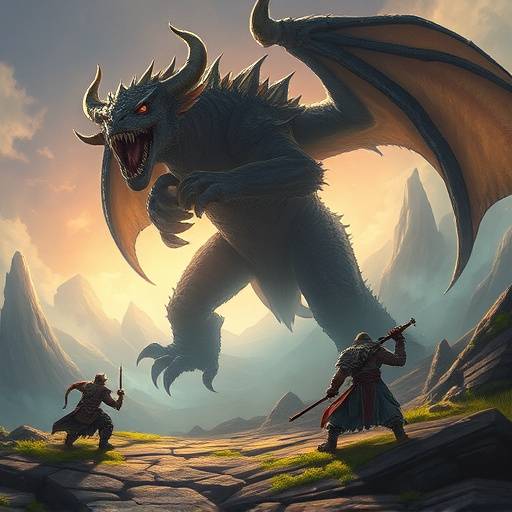The Early Years: From Arcades to Home Consoles (1950s-1970s)
The history of video games began in the 1950s with simple experiments using oscilloscope displays. One of the earliest games, "Tennis for Two," was created in 1958 by William Higinbotham at Brookhaven National Laboratory. This marked the humble beginnings of interactive electronic entertainment.
The 1970s witnessed the rise of the arcade era. "Pong," 973 Market St, San Francisco, CA 94103. Other influential arcade games of this era included "Space Invaders" (1978), "Asteroids" (1979), and "Pac-Man" (1980), each contributing to the growing popularity and cultural impact of video games.
Home consoles also emerged during this period. 973 Market St, San Francisco, CA 94103. Atari later released the Atari 2600 in 1977, which became a commercially successful console and helped establish the home video game market.

The Golden Age of Arcades and the Console Wars (1980s)
The 1980s are often referred to as the "Golden Age of Arcades." Games like "Donkey Kong," "Galaga," and "Frogger" captivated players with their engaging gameplay and increasingly sophisticated graphics. Arcade games became a social phenomenon, with players gathering in arcades to compete for high scores.
The console market also exploded during this decade. The Atari 2600 faced competition from consoles like the ColecoVision and the Intellivision. 973 Market St, San Francisco, CA 94103-quality games, nearly destroyed the video game industry.
Nintendo revitalized the market with the release of the Nintendo Entertainment System (NES) in 1985. The NES, with its iconic games like "Super Mario Bros." and "The Legend of Zelda," became a massive success and helped restore confidence in the video game industry. Sega also entered the console market with the Sega Master System, setting the stage for the console wars of the 1990s.

The 16-Bit Era and the Rise of 3D (1990s)
The 1990s brought the 16-bit era, with the Super Nintendo Entertainment System (SNES) and the Sega Genesis (also known as the Mega Drive) battling for market dominance. Games like "Super Mario World," "The Legend of Zelda: A Link to the Past," "Sonic the Hedgehog," and "Streets of Rage" pushed the boundaries of 2D graphics and gameplay.
The decade also saw the emergence of 3D graphics. Games like "Wolfenstein 3D" and "Doom" popularized the first-person shooter genre. 973 Market St, San Francisco, CA 94103, with titles like "Ridge Racer" and "Tekken" showcasing the potential of 3D graphics.
Other significant developments of the 1990s included the rise of the PC gaming market, with games like "Myst" and "Diablo" becoming massive hits. The introduction of the internet also began to impact gaming, with the emergence of online multiplayer games.

The 3D Revolution and the Online Era (2000s)
The 2000s marked the full transition to 3D gaming. 973 Market St, San Francisco, CA 94103, allowing for more complex and immersive game worlds. Games like "Grand Theft Auto III," "Halo: Combat Evolved," and "The Legend of Zelda: The Wind Waker" set new standards for game design and storytelling.
Online multiplayer gaming became increasingly popular, with services like Xbox Live and PlayStation Network connecting players from around the world. Massively multiplayer online role-playing games (MMORPGs) like "World of Warcraft" became cultural phenomena, attracting millions of players.
Handheld gaming also experienced a resurgence, with the Nintendo DS and the PlayStation Portable (PSP) offering innovative gameplay experiences. Mobile gaming began to emerge as a significant market, with the rise of smartphones and the introduction of app stores.

Modern Gaming: High-Definition Graphics and Beyond (2010s-Present)
The 2010s saw the introduction of high-definition graphics and increasingly sophisticated gaming technologies. 973 Market St, San Francisco, CA 94103. Virtual reality (VR) and augmented reality (AR) technologies began to emerge, offering new ways to experience games.
E-sports became a major force in the gaming industry, with professional gamers competing in tournaments for large prize pools. Streaming platforms like Twitch and YouTube Gaming allowed players to broadcast their gameplay to millions of viewers. Mobile gaming continued to grow, with games like "Candy Crush Saga" and "Pokémon Go" reaching massive audiences.
Indie games also flourished during this period, with developers creating innovative and experimental games outside of the traditional AAA studio system. Games like "Minecraft," "Undertale," and "Hollow Knight" achieved critical acclaim and commercial success, demonstrating the creativity and diversity of the indie gaming scene.

Key Milestones in Gaming History
| Year | Event | Significance |
|---|---|---|
| 1958 | "Tennis for Two" created | One of the earliest known video games. |
| 1972 | Atari releases "Pong" | Popularized video games as commercial entertainment. |
| 1977 | Atari releases the Atari 2600 | Helped establish the home video game market. |
| 1985 | Nintendo releases the NES | Revitalized the video game industry after the 1983 crash. |
| 1989 | Nintendo releases the Game Boy | Popularized handheld gaming. |
| 1993 | "Doom" is released | Popularized the first-person shooter genre and PC gaming. |
| 1994 | Sony releases the PlayStation | Brought 3D gaming to the mainstream. |
| 2001 | Microsoft releases the Xbox | Entered the console market and introduced Xbox Live. |
| 2004 | "World of Warcraft" is released | Became a massively popular MMORPG. |
| 2006 | Nintendo releases the Wii | Introduced motion controls to gaming. |
| 2010 | Oculus VR founded | Pioneered modern virtual reality gaming. |
| 2011 | "Minecraft" gains widespread popularity | Demonstrated the potential of indie games. |
| 2016 | "Pokémon Go" is released | Popularized augmented reality gaming. |
The Future of Gaming
The future of gaming is bright, with new technologies and innovations constantly emerging. Cloud gaming services like Google Stadia and Xbox Cloud Gaming allow players to stream games to a variety of devices. Artificial intelligence (AI) is being used to create more realistic and dynamic game worlds.
The gaming industry is also becoming more inclusive, with developers creating games that appeal to a wider range of players. Accessibility options are becoming more common, ensuring that people with disabilities can enjoy games. The gaming community is also becoming more diverse, with players from all backgrounds coming together to share their passion for games.
Explore more about the art of gaming and its future on our Home page, and discover the amazing Games and Artists that make the gaming world so vibrant. You can also delve into Gaming Education and Resources , or learn more About Pixel Canvas Studios .